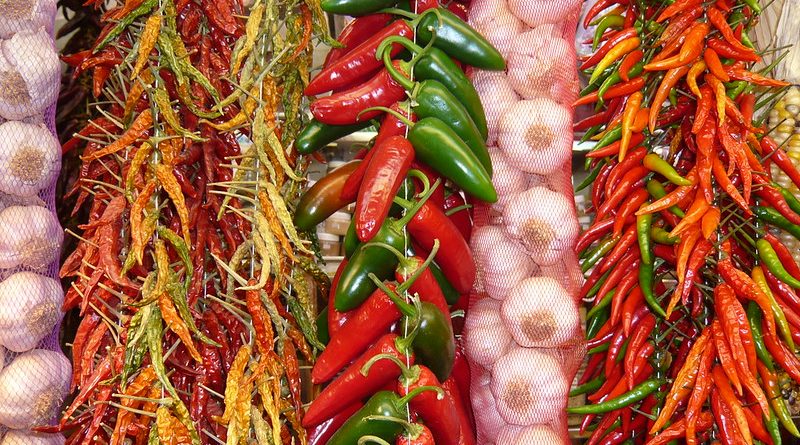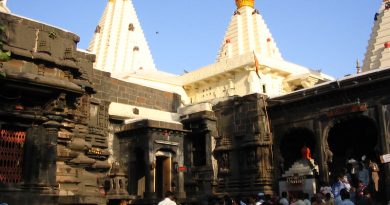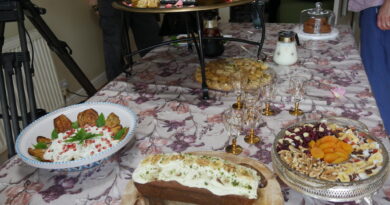Along the Spice Trail
The word ‘spice’ comes from an old French word meaning ‘special’. Spices came from lands considered at the time to be on edge of the world – many people in the ancient world believed they came from Paradise. The Egyptians mummified their dead with cumin, the Chinese burnt cloves to commune with the spirit world, and some medieval Europeans believed nutmeg was the only cure for the Plague.
Spices can be the bark, root, bud, seed or fruit of a plant. They can be used whole and fresh, dried or – most commonly – pounded into a powder. Today, spice trails cover the world. Cumin from the Middle East is often associated with Mexico, whilst chillies from Mexico are now used more in places like India. Fennel seeds, originally from Southern Europe, are used more often in China. Ginger from India is used copiously in Caribbean food, and turmeric from India is used a lot in the food of North Africa. While cinnamon from Sri Lanka is massive in Indonesia.
Cloves
The cloves that we use in cooking are the dried flowers that come from Clove trees. The plant originated on the volcanic islands called the Moloccas and centuries ago thousands of people lost their lives fighting over cloves because they were more valuable than gold. Derived from the French word ‘clou’ meaning ‘nail’, clove oil contains eugenol, an antiseptic still used in toothpastes and mouthwash.
Nutmeg
Nutmeg (and mace) originally came from the Banda Islands, the only place in the world where they grew and where they were discovered. Nutmeg is commonly used in fillings for pasta, often with spinach and mace is used in milk-flavoured sauces such as béchamel.
Pepper
Black pepper once only grew on the Malabar – or West – coast of India – a 5,000-mile journey to the tables of Rome. The spice capital of the Malabar Coast is Cochin in Kerala – today still a vibrant port where all sorts of spices are grown and sold. A combination of Kerala’s hill, climate and soil yield some of the best spices in the world. Historically, pepper was a valuable commodity and was also offered as a treasured gift to visiting dignitaries. Black pepper is picked when the corns are still green and it’s laid out on terraces called ‘barbeques’ where they are dried out in the sun until they turn black and shrivel. White pepper is the same berry – except it is picked when the berry is red , then soaked so that the outer husk can be removed rendering it much milder than black pepper. When you eat it, it hits the back of your throat rather than the tip of your tongue.
Cumin
Cumin has a sweet aroma with a mildly bitter taste. It’s native to the Eastern Mediterranean and has been used for over 5,000 years. In medieval Europe it was thought to encourage faithfulness.
Sumac
Sumac is used widely in Lebanese, Iranian and Turkish cuisines. The Romans used sumac as a souring agent, in the same way we would use lemon juice. It has also been used as a treatment for various ailments in medieval times and in North America it has been used to make a beverage ‘sumac-ade’ (or ‘Indian Lemonade’) and the leaves and drupes from Smooth and Staghorn Sumacs have been combined with tobacco as a traditional smoking mixture.
Saffron
Native to the Eastern Mediterranean, the Arabs took saffron west with the spread of Islam into Moorish Spain, where 70 per cent of the saffron now grows. The region of La Mancha is best known for Don Quixote and its famous windmill. It’s also the place where Spain’s precious crop of saffron is harvested. Saffron comes from the delicate crocus flower which blooms for only a few weeks each year. The fragile stamen inside the flower has to be hand picked and it takes about 200 flowers to yield one single gram, which is why saffron is so expensive. This painstaking work is celebrated at the Saffron Rose Festival held each year in Consuegra, Spain.
Cardamom
Cardamom is part of the ginger family and grows in southern India. Hand picking is essential so as not to damage the pods, which is why cardamom is one of the most expensive of all spices.
Vanilla
Mexico is the birthplace of vanilla and it is one of the most expensive spices after saffron. It was the Tetanus, a local indigenous tribe, who discovered the orchid that produces the vanilla pod. Even today at harvest time they celebrate these prize pods in a very unique way. Three times a day for the week long vanilla festival the ‘volatores’ (or ‘flyers’) take their life into their own hands, suspending themselves high above the ground from a twisting, falling rope for up to 15 minutes. The Tetanus developed the painstaking process of curing the vanilla pods – a secret they have guarded for centuries.
Turmeric
Native to the tropical climbs of South Asia, and most commonly sold dried in powder form, it is used as a common component of curry powder. Turmeric is a multi-purpose spice, often used also as a colouring agent due to its rich yellow colour. It has also been described as ‘Indian Saffron’ as it is also used as a cheap alternative to the more expensive Saffron spice.
Cinnamon
Used both for sweet and savoury foods, Cinnamon is a spice which comes from the inner bark of Cinnamon trees which are native to South East Asia. Cinnamon was traded along the ‘cinnamon route’ which stretched from the Moluccas to East Africa. It was then traded internationally by Arab traders in Alexandria to Venetians in Europe.
Chilli Pepper
Originating from the Americas, and cultivated around the world ever since, chillies were first bought to Spain by the second Columbus voyage to the West Indies in 1493. Chilli peppers have been used as part of the human diet since at least 7,500 BC. As well as being highly nutritious food product, it has been used as a medicinal product to help relieve the symptoms of arthritis, and as crop defence in Africa and the Indian sub-continent.
Spice Mixes
China (Five-spice Powder)
Spices play a key role in Cantonese cooking. In remote South China, the Yao tribe have used imported cloves in their cooking for centuries. The Yao have always been farmers and indigenous produce has always influenced their recipes. The recipe for a traditional 5-spice powder is equal quantities of indigenous Sichuan pepper, cassia or Chinese cinnamon, and star anise, along with fennel seeds, originating in the Mediterranean and cloves from the islands to the south.
India
There are a variety of spices traditional to Indian cuisine and native to the Indian sub-continent which constitute a wide group of spices commonly referred to as ‘Indian Spices’. Such spices include ajwain (carom seed), jaiphal (nutmeg), jeera (cumin), haldi (turmeric), and javitri (mace). Spice mixtures such as garam masala are often heated in a pan with ghee or cooking oil before being added to a dish. Spices with strong flavour are commonly added first and lighter spices last.

Spice Market in Old Delhi, India
Caribbean
Caribbean cuisine is a fusion of various influences from African and Amerindian cuisine, to British, Chinese, Dutch, French, Indian and Spanish cuisine. Caribbean cuisine blends these influences using many of the spices traditional to these cuisines to create vibrant flavours. The most famous is the Caribbean spice rub called ‘jerk’ which is used to spice chicken, pork or goat meat prior to roasting. Jerks are made from allspice, cloves, Scotch bonnet peppers, cinnamon, scallions, nutmeg, thyme and garlic. Meats may also be marinated with ginger, chillies and lime.
Middle East and North Africa
Ras el-hanout is a traditional blend of some of the best spices which a seller has – literally meaning ‘top of the shop’ in Arabic. It could be a mixture of a few or many different spices such as chilli peppers, cumin, peppercorn, nutmeg, cardamom, clove, cinnamon or coriander. Often believed to be an aphrodisiac, Ras el-hanout is often found rubbed into meat or blended with rice.
Spice Timeline
- Archaeologists believe that certain leaves were used to impart delicious flavours to meat 50,000 years ago.
- 50 BC Romans bring mustard seed to UK.
- 300 BC Date of oldest cookbook, by Apicius of Rome, recipes richly spiced.
- 900 BC Rome rises as commercial power – much of it based on spices – bringing Europe out of the Dark Ages.
- 1498 Portuguese reach Calicut India, spice centre, pepper prices fall.
- 1498 Columbus Christopher Columbus lands on Trinidad in his first expedition to discover a westward route to the Indies, bypassing the eastward route commanded by Arabs and Italians, to allow Spain entry into the Spice trade.
- 1505 Portuguese discover Ceylon, cinnamon source.
- 1580 Francis Drake completes round the world voyage which includes visit to the so-called Spice Islands.
- 1600 British East India Company founded.
- 1640 Dutch seize Malacca and control of most spice production in the East.
- 1704 Europe first reads ‘Arabian Nights’ and Sinbad’s spice quest.
- 1770 Pierre Poivre of France steals cloves and nutmeg seeds from Dutch and starts new growing areas on the colonies of Ile de France and Bourbon (today Mauritius and Reunion) – 1st breach of Dutch East India Company monopoly.
- 1786 English found Penang – later to become a major Eastern pepper port.
- 1969 Spices reach the moon as seasoning for Apollo astronaut’s food.
- 1976 World trade in black pepper sets an all-time




